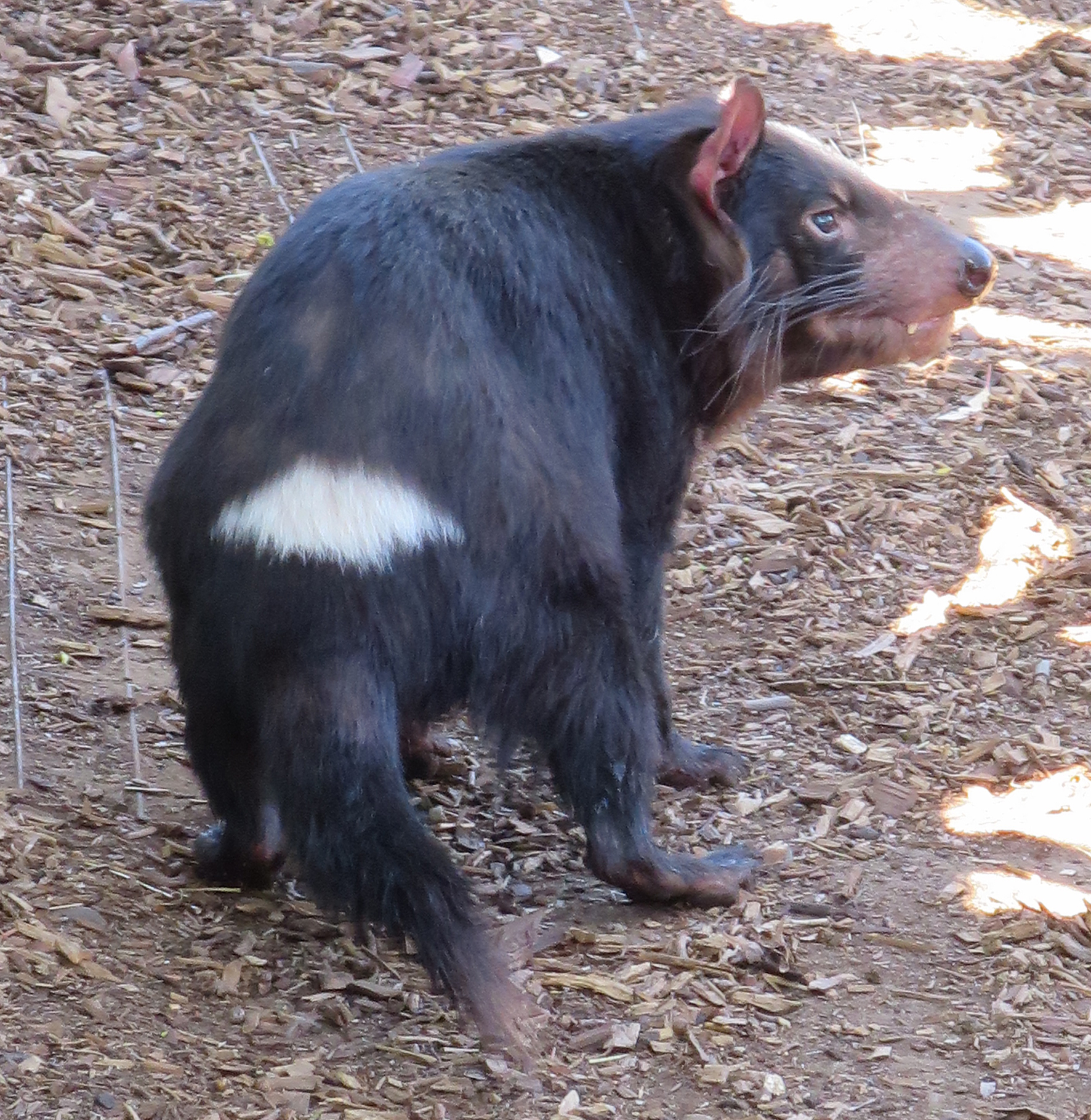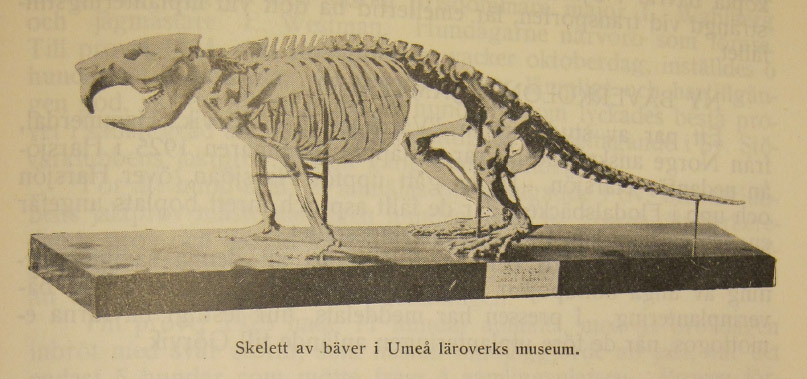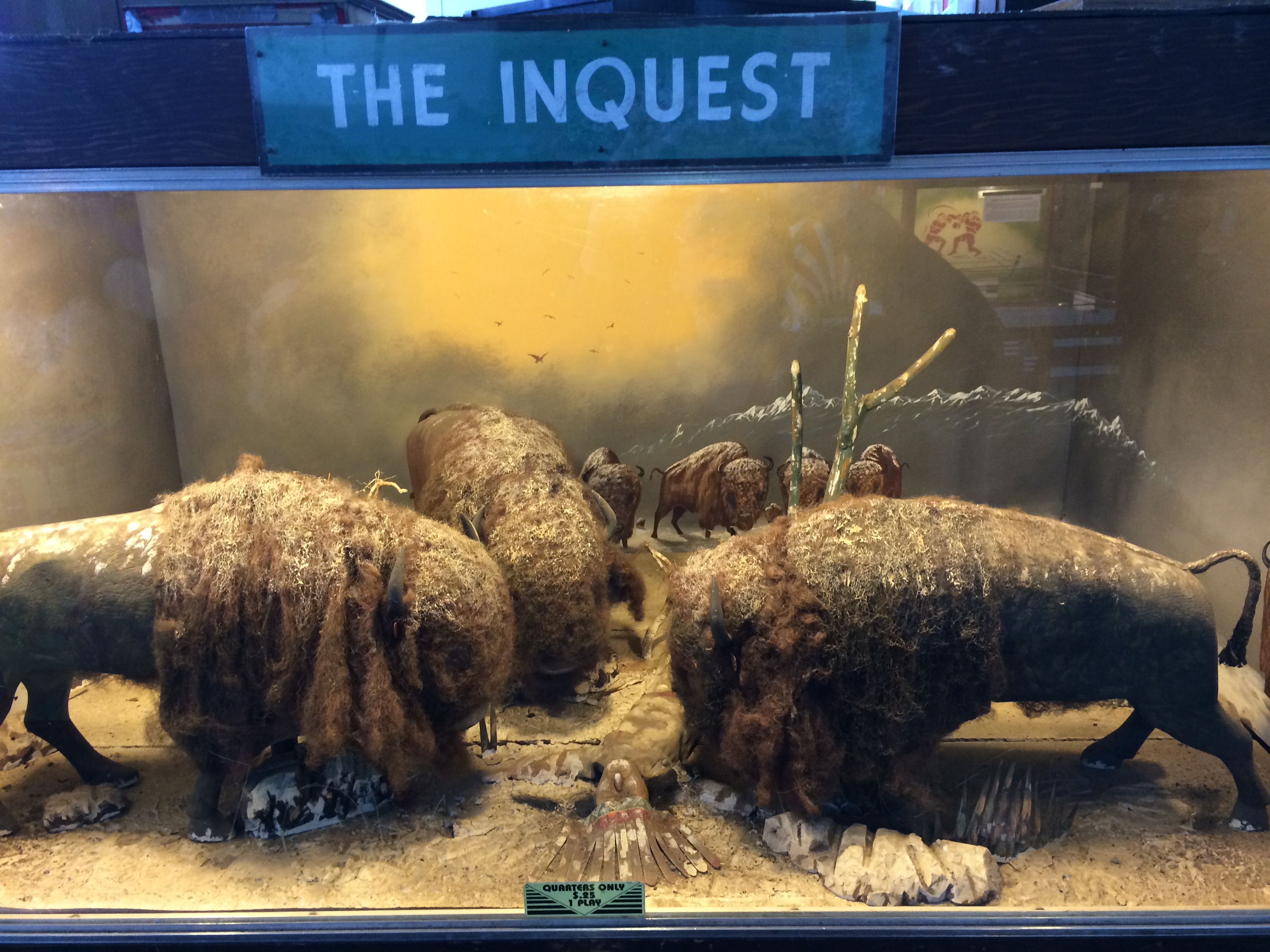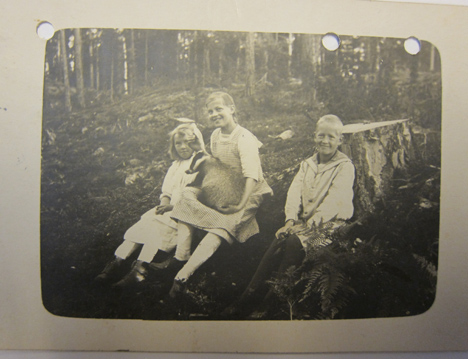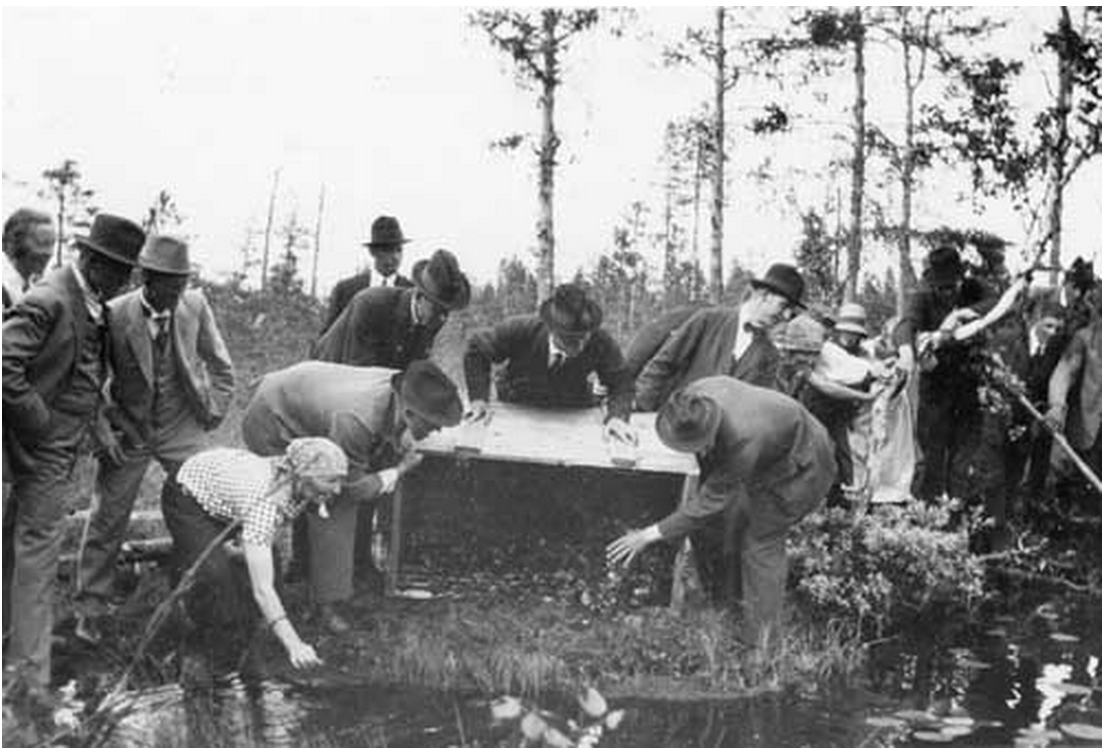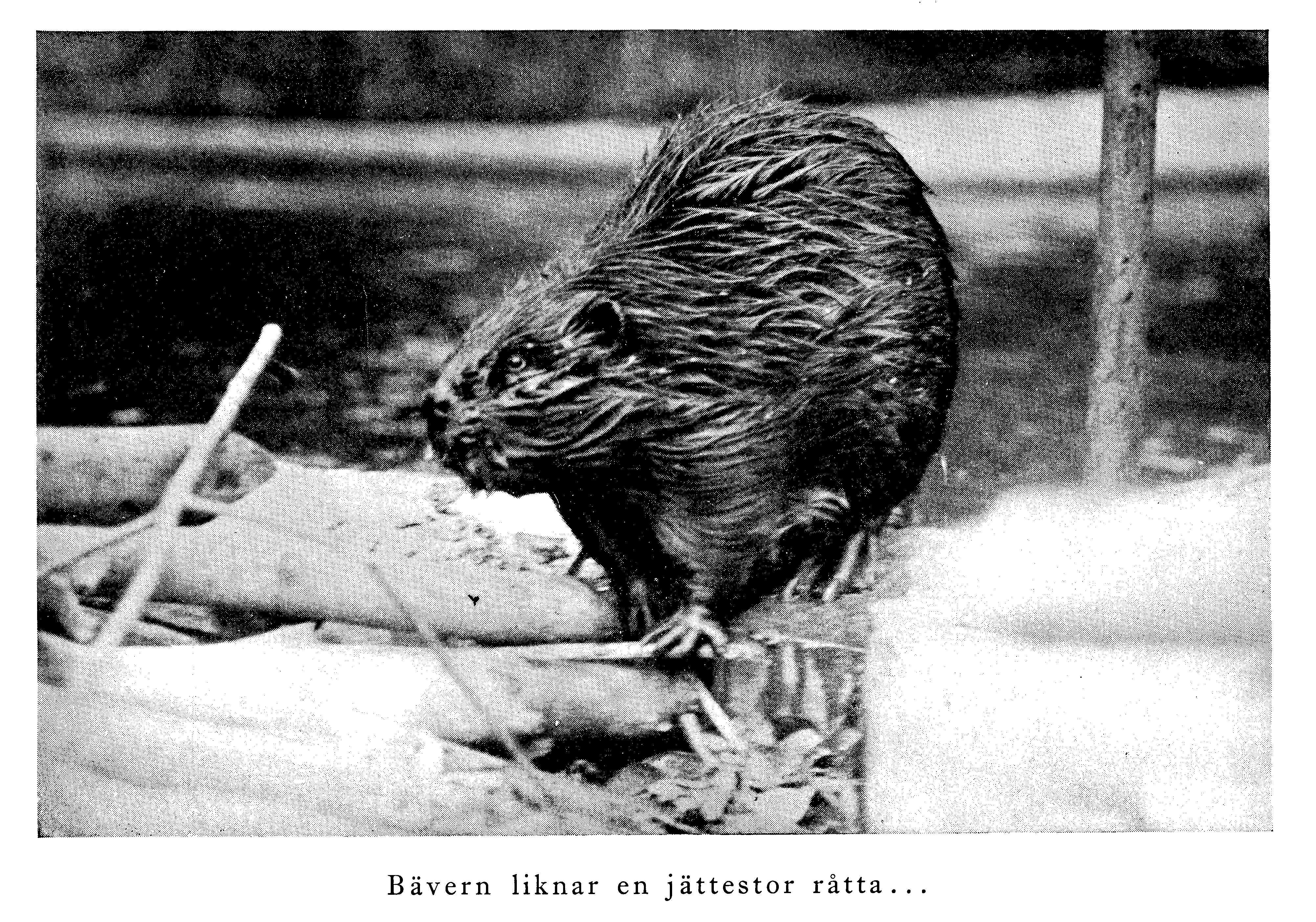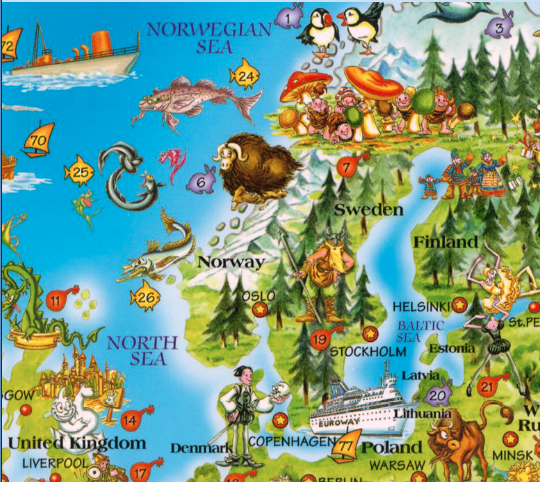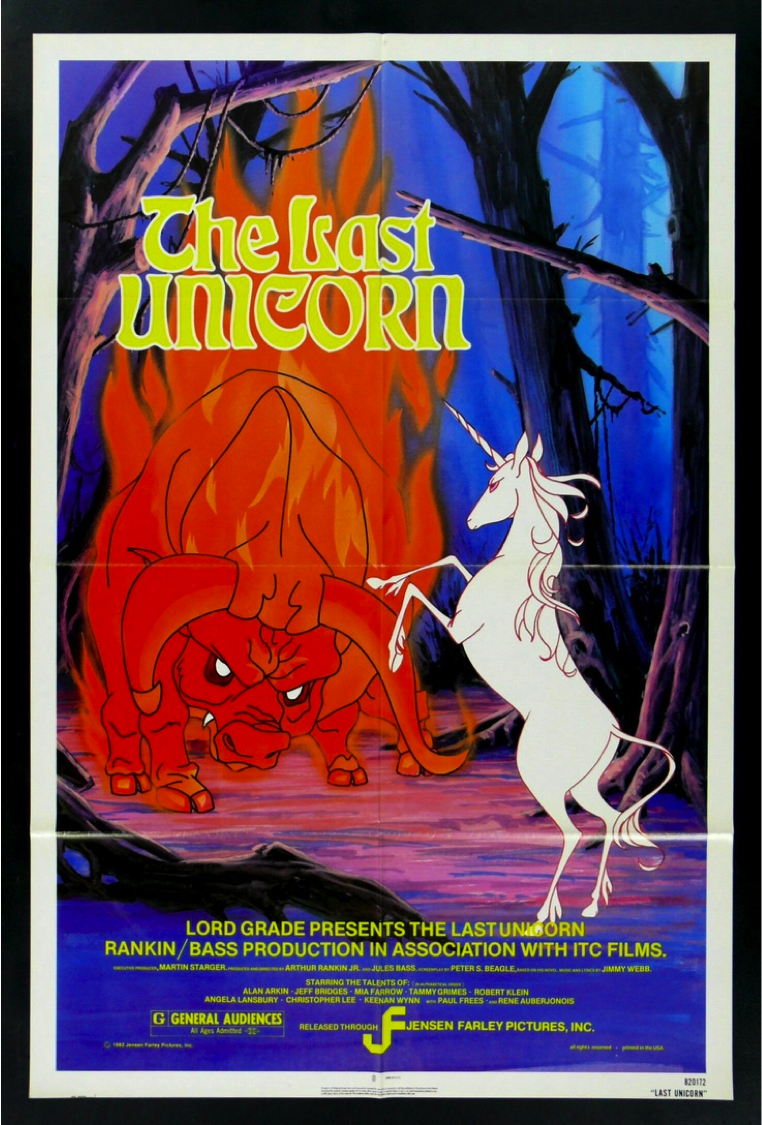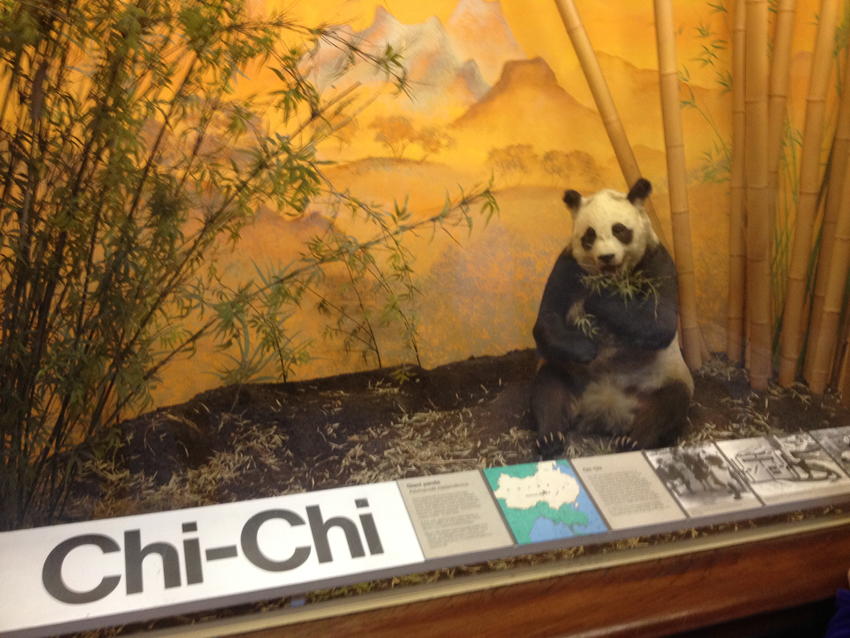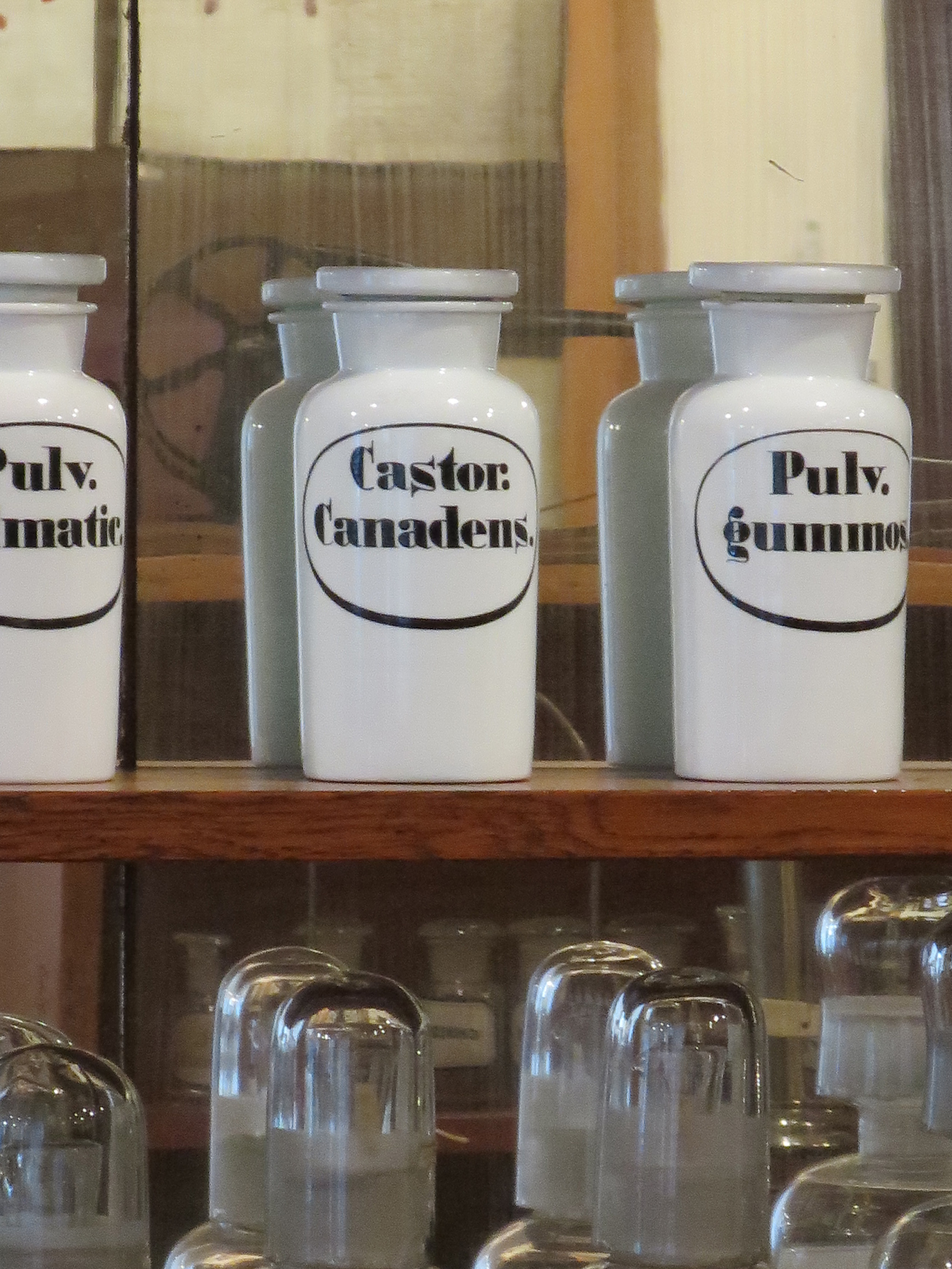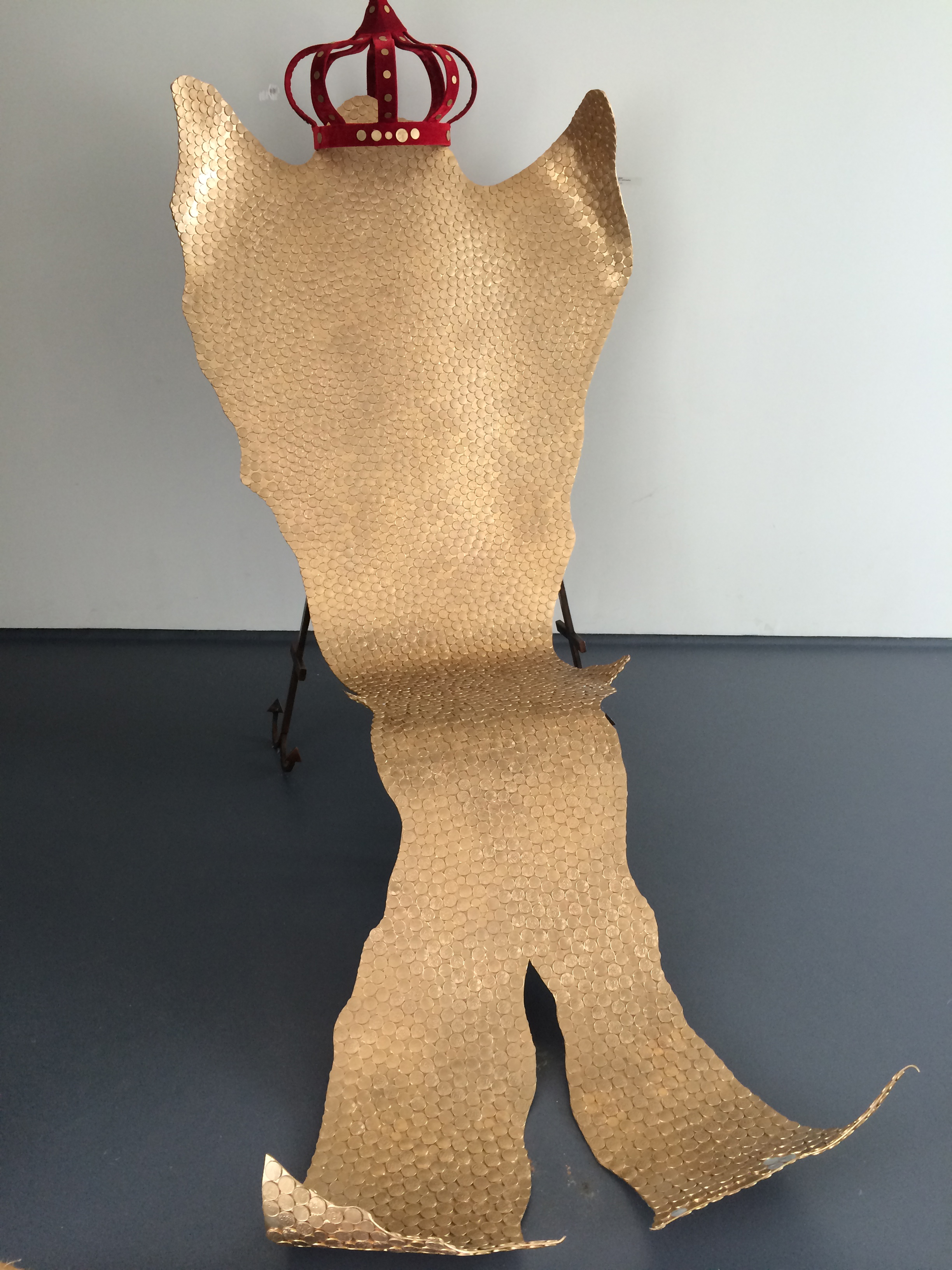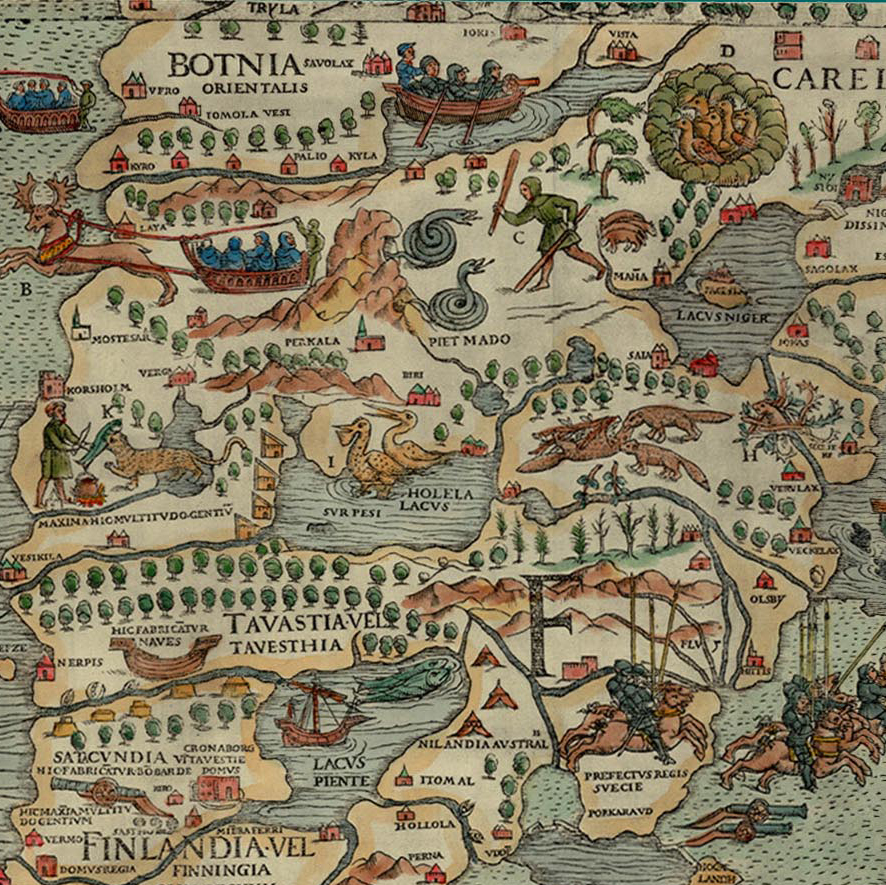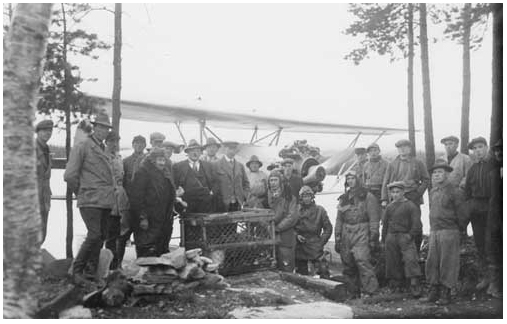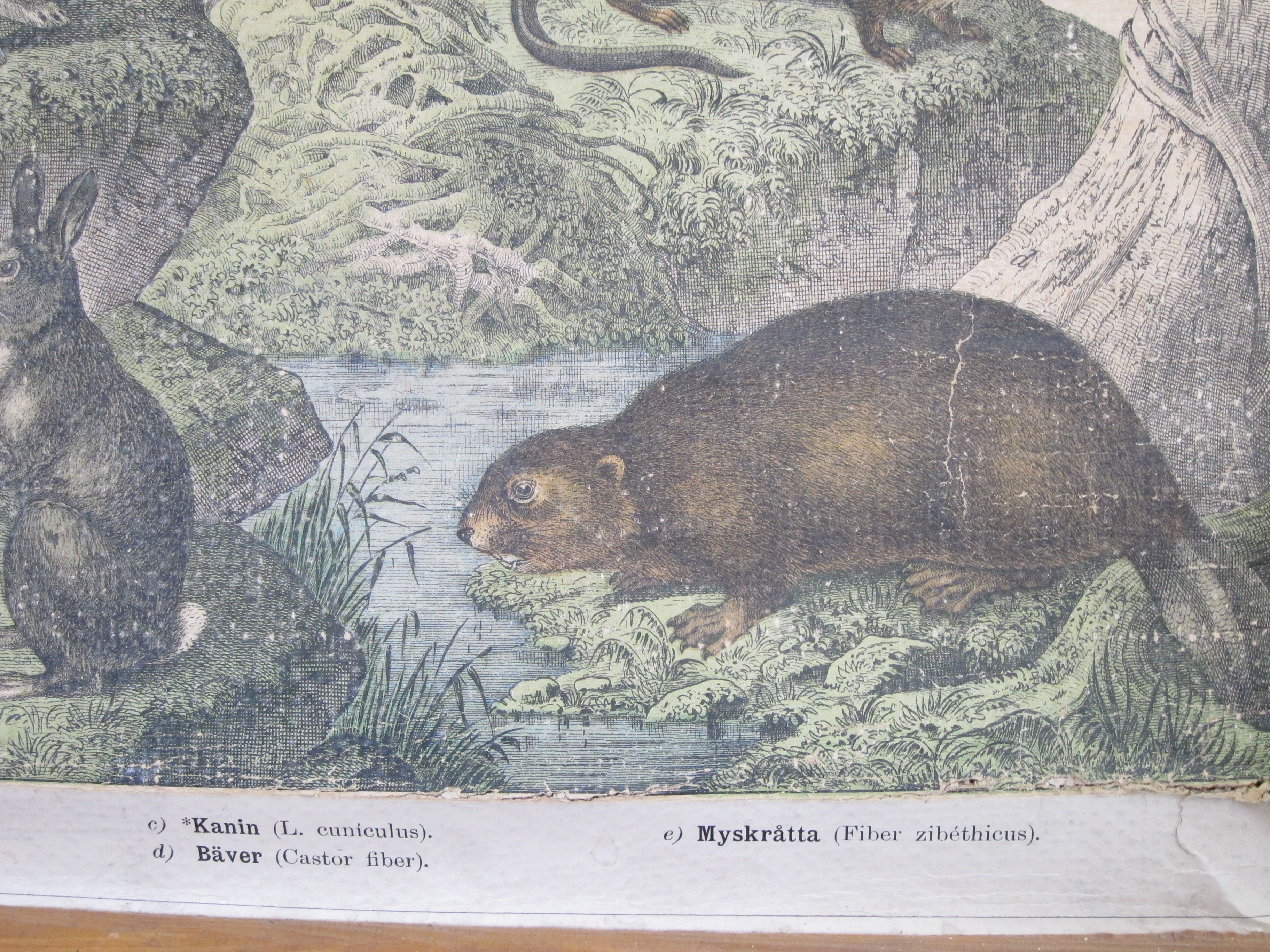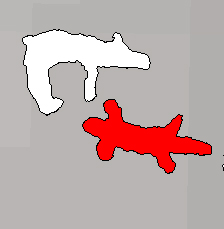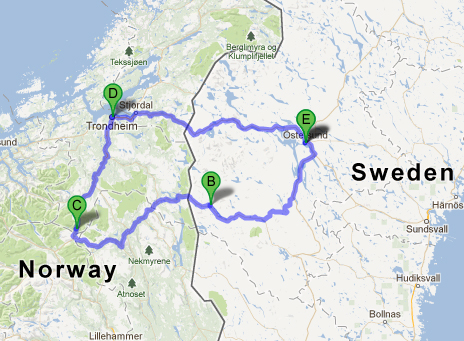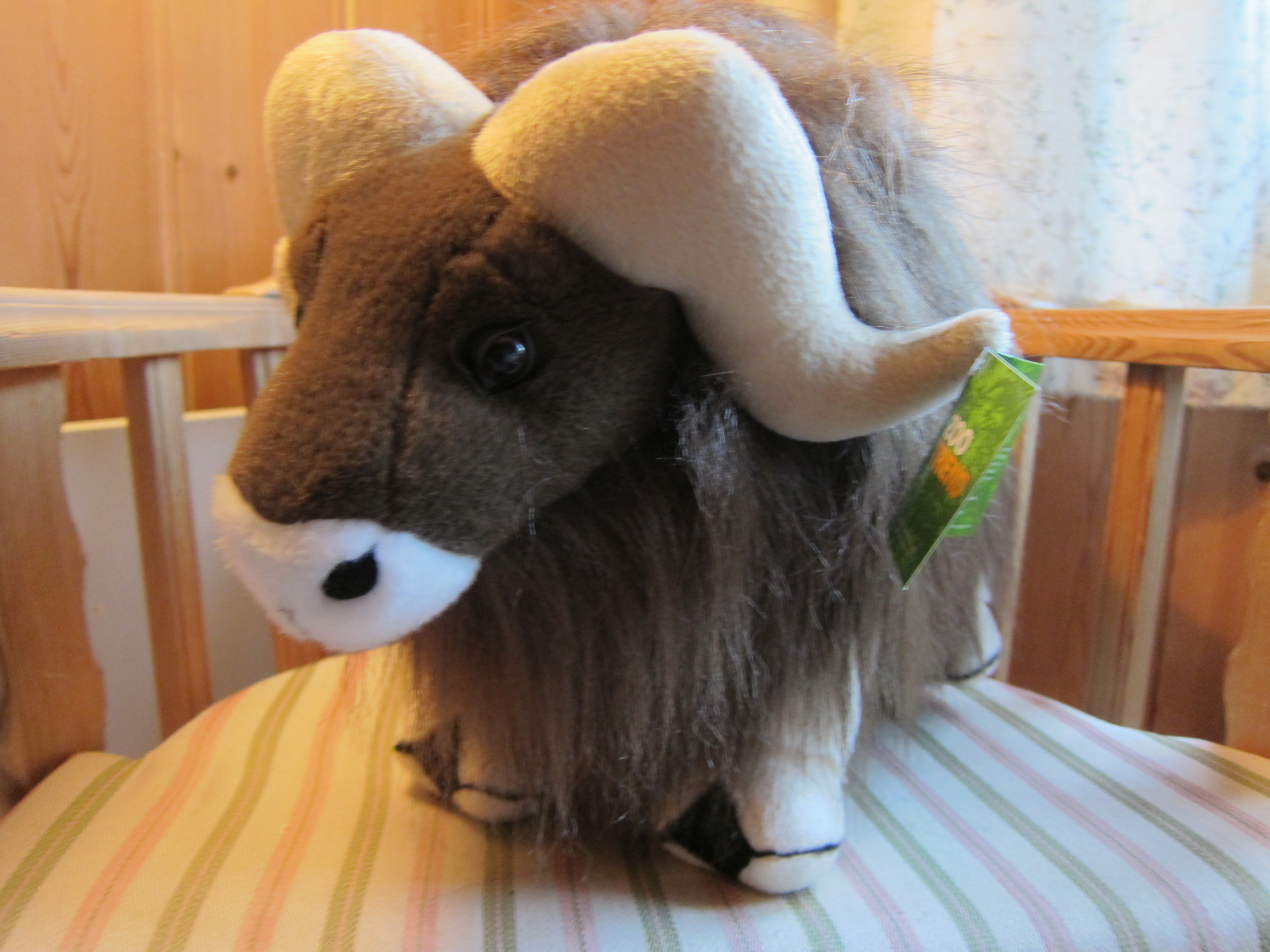images
-
From tiger to devil
The island of Tasmania, Australia, was the final home of the large carnivorous marsupial thylacine, also known as the Tasmanian tiger because of its stripes. The last known thylacine died in September 1936 in a private zoo in Hobart, Tasmania. Because I’ve been interested in extinction and extinction stories, I visited Hobart earlier this week to see the home of the thylacine.
-
Stamp of approval?
Muskoxen have been roaming the Swedish mountains only since 1971 (at least this time around – they were present also several thousand years ago). That small group of animals had migrated by themselves over the Norwegian-Swedish border, so it was not a given how people would respond to these ‘new’ animals. For the most part, muskox quickly became understood as a central element in the mountains of Härjedalen, probably because of its novelty and distinctive appearance. When a Swedish national postage stamp series titled “Fjällvärld” (“Mountain World”) was issued in March 1984, the images chosen were a general mountainscape, the angelica flowering plant (also known as wild celery), the lemming, and the…
-
Another anonymous woman
Today is International Women’s Day 2015 and there’s been a lot of twitter traffic on it, particularly within my networks by trying to raise awareness of women in science. So I wanted to reflect on women in the histories I’m currently writing. The problem is that, quite honestly, there aren’t any. I looked through all of the documents about the beaver reintroductions I photographed in my archival visits. All of the letters are written by men to men. Everyone who was involved in planning, catching, purchasing, moving, and writing about the beavers was male. But women were at releases. At the first reintroduction in 1922, there were 20 people there and one was…
-
The last _____
When the last eagle flies over the last crumbling mountainAnd the last lion roars at the last dusty fountainIn the shadow of the forest though she may be old and wornThey will stare unbelieving at the last unicorn. – America, “The Last Unicorn” When I was a young girl I saw The Last Unicorn, a film from 1982 based on a book from 1968 by Peter S. Beagle. In fact, I saw it many times thanks to HBO cable television. It was mesmerising to me to see the beautiful unicorn in search for others like herself, her quest to know if she was the last. Along the way, she is…
-
Making room in a medieval story & today
The biographies written in the early 8th century about St. Cuthbert, who lived c.634-687, include several miracles with animals. The most famous of these is a story of the otters who anoint and wipe Cuthbert’s feet, but I think the lesser known stories of birds might give us insights about animal belonging and making room for the nonhuman. In one story, Cuthbert got angry at some birds who were eating the newly sowed barley crop: The most pious servant of God approached them … ‘Why,’ said he, ‘do you touch the crops that you did not sow? … If, however, you have received permission from God, do what He has allowed…
-
Otters then and now, north and south
The Eurasian otter (Lutra lutra) is extremely widely distributed in Europe and Asia, but in spite of its huge range it is also linked historically to certain geographies. The otter is not included in the medieval bestiary corpus, unlike many other European animals like the beaver which makes regular appearances. There is a bestiary animal called the ichneumon which some have identified as otter, but it is much closer in description to a mongoose (the ichneumon’s primary trait is its ferocity toward dragons, crocodiles and snakes). But otters do appear on premodern maps. Olaus Magnus included an otter on his Carta marina from 1539. He places this otter in the region of Östrabottnia,…
-
King Cod
Early in July, I had the privilege of being an instructor in the European Society for Environmental History (ESEH) Summer School in Porto, Portugal. Part of the School included a wonderful day at the Ílhavo Maritime Museum, which exhibits the history of codfish industry in northern Portugal. The museum included historical boat displays and a cod aquarium, with a touch of modern art inspired by cod mixed in. Codfish is consumed regularly by Portuguese who call both the fish and all culinary dishes containing the fish bacalhau. Bacalhau has medieval roots. Norwegian fishermen ramped up their cod catches and began exporting to elsewhere in Europe in earnest in the 13th century, according to…
-
Lost and found
I saw an image tweeted a few weeks back about beaver reintroduction that I think is worthy of some reflection. The poster is in the genre of ‘Lost pets’ that we all recognise from posters on street lamps, bus stops, and public boards. The headline ‘LOST’ in all caps catches our attention. We recognise that the animal shown in the image has been ‘lost’. Below the picture we get information about its name, when it was last seen, what it means to the people who have lost it, and the reward. The only thing missing that we might expect on a ‘lost’ poster is a name & phone number to contact if found. (This would…
-
School posters
This week during the Framing Nature conference in Tartu, Estonia, I went on a field trip that visited a 19th century school house. Oskar Luts, an Estonian writer, had attended the parish school in Palamuse, Estonia, from 1895 to 1899 and his most famous (and first) book Kevade (Spring) is set at the school. If you want to read about the school, a one-page summary in English is here. The school house was large building with living quarters for the school master (who was the parish clerk), the school room, kitchen, and sleeping room for the boys (girls were added in a separate part after Luts’ time). The school room had a…
-
An inquest of “The Inquest”
This week I stopped as a tourist at the Musée Mécanique at Fisherman’s Wharf in San Francisco after the American Society for Environmental History annual meeting. The museum is part historical collection, part working penny arcade (although most things cost a US quarter now). There are stereoscope viewers, fortunetellers, strength testers, ball games, and car games. A large number of them machines are moving dioramas including farms with moving animals, carnivals with working rides, the oil field with spinning derrick drills, and bizarre morbid animated execution scenes including hangings and a beheading via guillotine. One of the automata diorama machines was called “The Inquest”, presumably dating from end of the…
